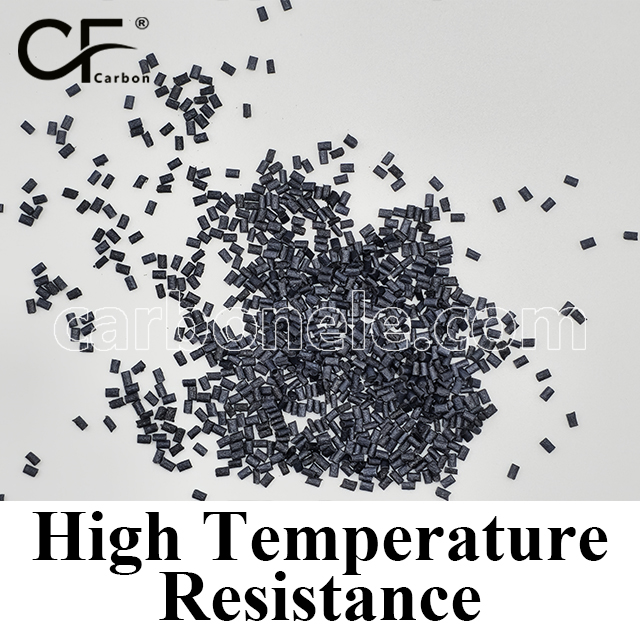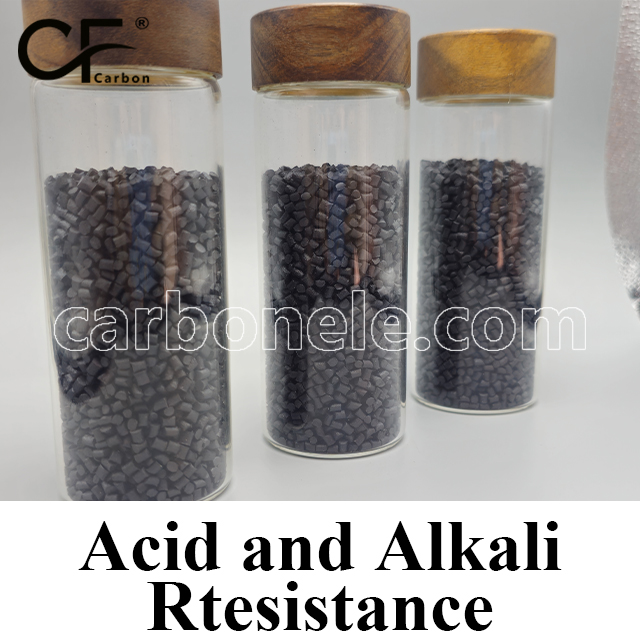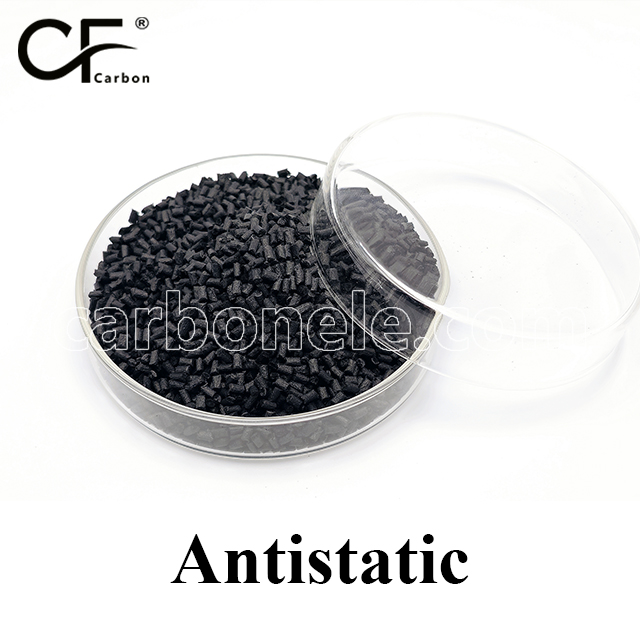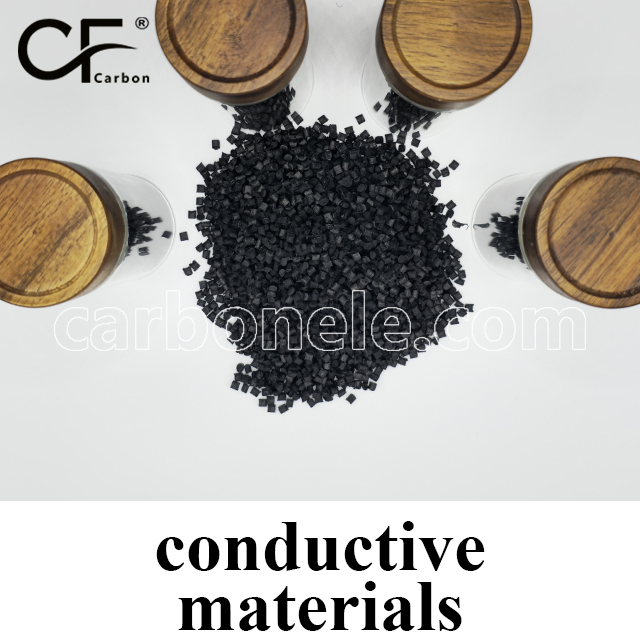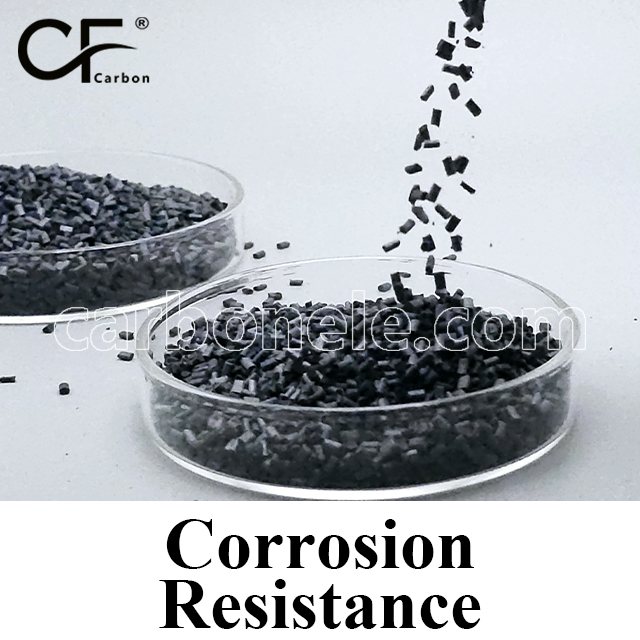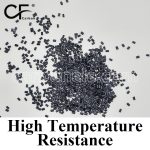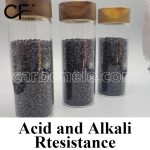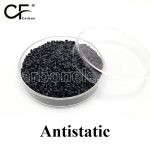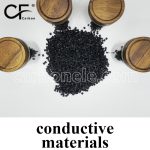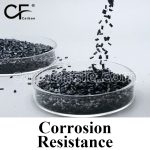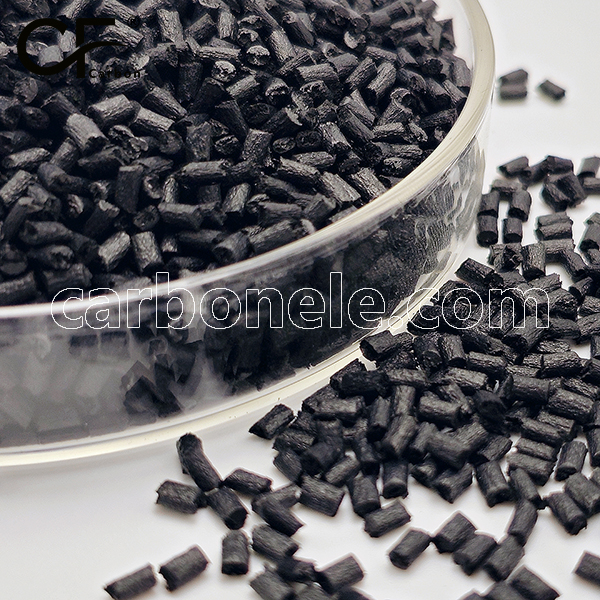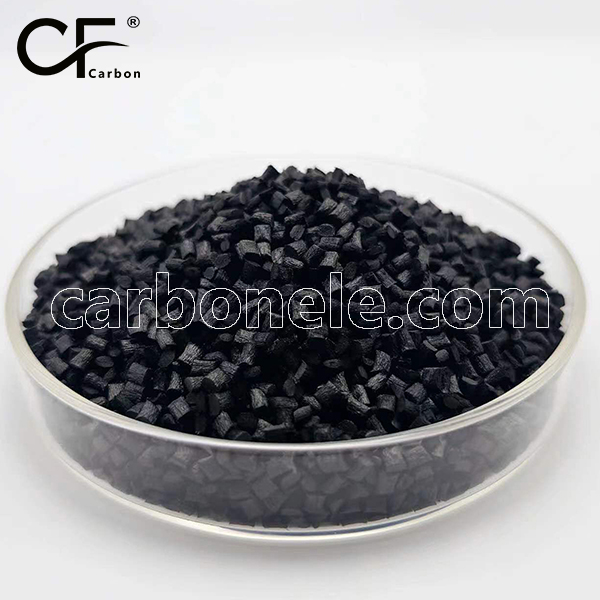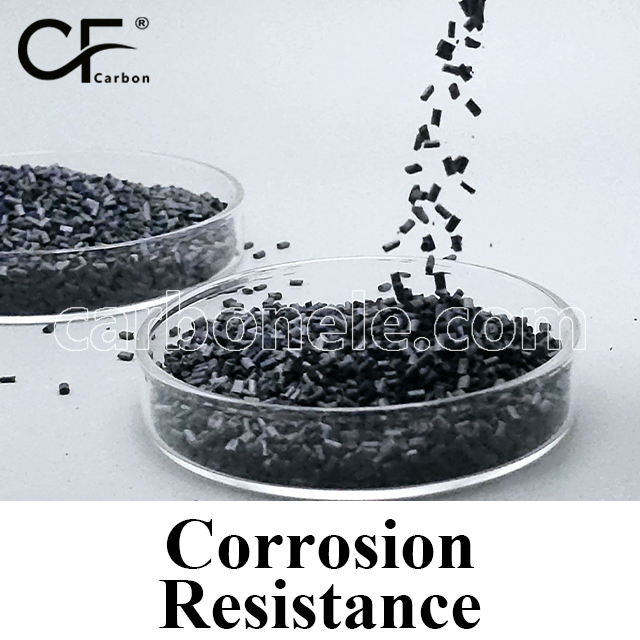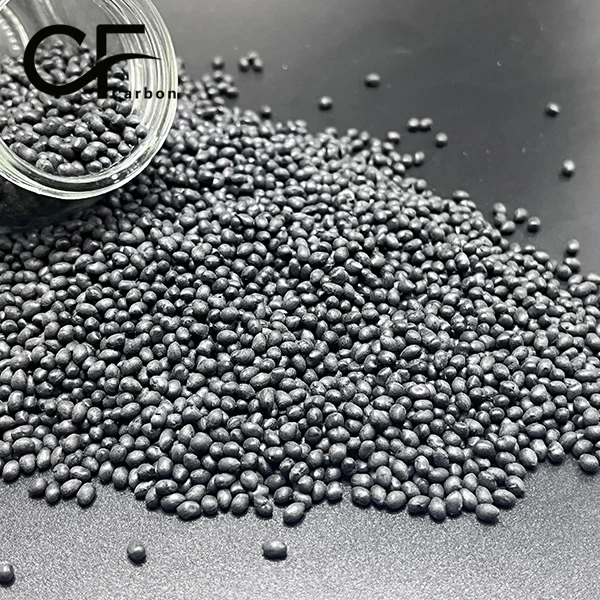PPA-CF30 is a high performance thermoplastic reinforced with 30% short carbon fiber, delivering excellent stiffness (~15 GPa), high tensile strength (~180 MPa), and thermal stability up to 230 °C. Ideal for metal-replacement in automotive, electrical, and industrial components requiring precision, strength, and chemical resistance.

Low Moisture Absorption PPA-CF30
- Model number: PPA-CF-BCA3
- Matrix Resin: Personal Package Archive (PPA)
- Reinforcing Filler: Carbon fiber
- Appearance: Granules
- Grade: Injection/extrusion grade
- Packaging: 25kgs/bag
PPA-CF30 | 30% Carbon Fiber Reinforced Polyphthalamide
PPA-CF30 is a high-performance, semi-crystalline engineering thermoplastic reinforced with 30% short carbon fiber, designed for maximum mechanical strength, rigidity, and dimensional stability in demanding thermal and chemical environments. With a high fiber loading, it delivers metal-like performance while maintaining PPA’s excellent chemical resistance and thermal endurance.
Compared to lower fiber content grades such as PPA-CF10 and PPA-CF20, PPA-CF30 offers significantly improved creep resistance, load retention, and warpage control, making it ideal for precision-engineered components operating under high stress and temperature cycling.
Core Performance Highlights
Mechanical Properties
Carbon Fiber Content: 30% (short chopped fibers, densely distributed)
Tensile Strength: ~165–180 MPa
Flexural Modulus: ~14–15 GPa
Elongation at Break: ~0.8–1.2%
Notched Izod Impact: ~35–45 J/m
→ The high CF content gives PPA-CF30 exceptional stiffness and structural integrity, ideal for metal replacement applications requiring tight tolerances and mechanical durability.
Thermal Resistance
Heat Deflection Temperature (HDT): ≥ 270 °C
Continuous Use Temperature: Up to 230 °C
→ Excellent for long term heat exposure, such as engine compartments, electric drive systems, or industrial machines under continuous thermal stress.
Environmental & Chemical Durability
Moisture Absorption: ~0.08–0.12% — very low, enabling stable part geometry
Chemical Resistance: Outstanding — resists fuels, oils, coolants, acids, bases, and industrial solvents
→ Delivers reliable mechanical and dimensional stability even in humid or chemically aggressive environments.
Processing & Manufacturing
Molding Methods: Injection molding
Surface Finish: Matte to rougher texture; fiber exposure likely
Tooling Requirements: Requires high hardness steel molds; increased tool wear expected
→ Lower flowability than CF20, but still suitable for structural parts with controlled wall thickness. Processing should be optimized to preserve fiber orientation and achieve optimal mechanical performance.
Target Applications
Automotive & Mobility
Structural brackets, pump housings, transmission supports
→ Delivers high strength, thermal resistance, and chemical durability for metal replacement in under hood systems.
Electronics & Electrical
Battery frames, connector blocks, inverter housings
→ Provides mechanical rigidity and dimensional control under heat, current, and vibration.
Industrial Equipment
Gear covers, sensor frames, robotic arms
→ Ideal for high load, high precision parts operating in corrosive or high temperature industrial settings.
Performance Summary Table
| Property | Value / Description |
|---|---|
| Carbon Fiber Content | 30% (Short Carbon Fiber Reinforced) |
| Tensile Strength | ~165–180 MPa |
| Flexural Modulus | ~14–15 GPa |
| Elongation at Break | ~0.8–1.2% |
| Notched Izod Impact | ~35–45 J/m |
| Heat Deflection Temp. | ≥ 270 °C |
| Long Term Service Temp. | Up to 230 °C |
| Moisture Absorption | ~0.08–0.12% — very low, ensures dimensional stability |
| Chemical Resistance | Excellent — fuels, oils, acids, bases, solvents |
| Wear Resistance | High — suitable for load bearing and friction-critical parts |
| Processing Methods | Injection molding |
| Surface Finish | Matte/textured — visible fiber texture common |
| Dimensional Stability | Excellent — minimal creep, very low warpage |
If you want to get more information about PPA-CF30, you can visit our Youtube.
Strength between PPA and PPA-CF
PPA-CF (carbon fiber reinforced) offers significantly higher mechanical strength and rigidity compared to standard PPA. The addition of carbon fiber enhances tensile strength, flexural strength, and wear resistance, making PPA-CF more suitable for heavy loads and extreme environments. While standard PPA is suitable for medium-load and conventional applications, PPA-CF provides superior performance for more demanding industrial conditions.
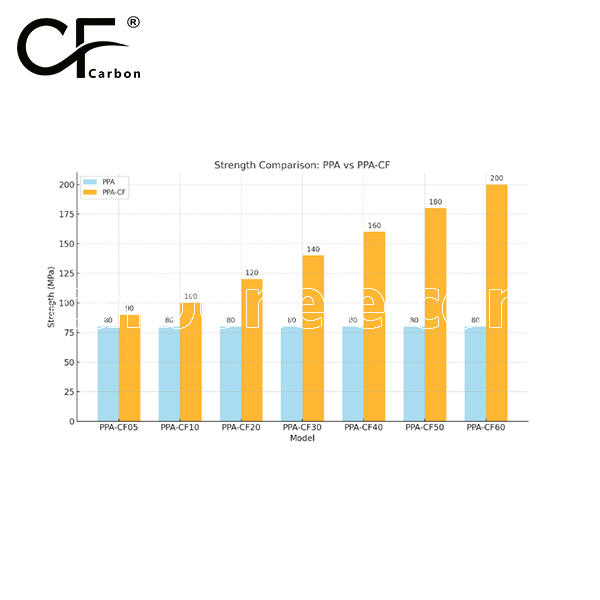
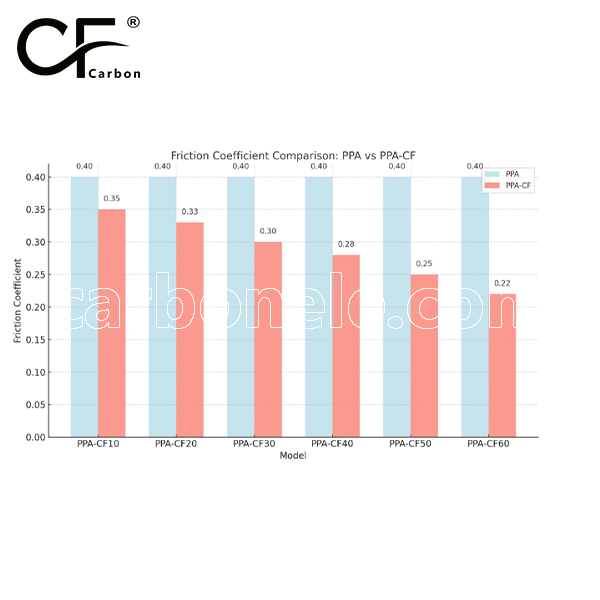

Frequently Asked Questions
Carbon (Xiamen) New Material Co., Ltd. aims to provide buyers with "one-stop" worry-free high-quality services. Here you can find all information about carbon fiber engineering plastics. If you still have questions, please send us an email for consultation!
-
How can I contact the manufacturer of a product that interests me?
When you find a product you are interested in, you can contact the manufacturer directly by sending an email and we will get back to you as soon as possible.
-
How do I find the products that interest me?
All you need to do is enter the keyword, product name in the search window and press the Enter key on your keyboard. Your search results page will then be displayed. You can also search within the product category pages on the home page. Each category is divided into subcategories, allowing you to refine your search and find products that interest you.
-
Where will I find a buying guide?
Please contact our after-sales service directly and we will provide you with a comprehensive operating guide.
-
What are CF Reinforced Thermoplastic Composites?
CF Reinforced Thermoplastic Composites are materials where carbon fibers are incorporated into a thermoplastic matrix. They combine the strength and stiffness of carbon fibers with the processability and recyclability of thermoplastics. For instance, they are used in automotive parts like bumper beams.
-
What are the benefits of CF Reinforced Thermoplastic Composites over traditional composites?
The key benefits include faster production cycles, easier recyclability, and better impact resistance. They also offer design flexibility. An example is in the manufacturing of consumer electronics casings where complex shapes can be achieved more easily.
-
How are CF Reinforced Thermoplastic Composites processed?
Common processing methods include injection molding, extrusion, and compression molding. Injection molding is widely used for mass production. For example, in the production of small components for the medical industry.
-
What industries use CF Reinforced Thermoplastic Composites?
They are utilized in aerospace, automotive, medical, and sports equipment industries. In aerospace, they can be found in interior components. In the medical field, they might be used in prosthetics.
-
How does the carbon fiber content affect the properties of the composites?
Higher carbon fiber content generally leads to increased strength and stiffness but may reduce ductility. A moderate content is often balanced for specific applications. For example, a higher content might be preferred in structural parts of a race car.
-
What are the challenges in using CF Reinforced Thermoplastic Composites?
Challenges include higher material costs, complex processing equipment requirements, and ensuring uniform fiber dispersion. Issues with adhesion between the fibers and the matrix can also arise. An example is in achieving consistent quality in large-scale production.







